Want to add some green to your home? The adaptable and easy-care Mother’s Tongue plant is a great choice. This guide offers 27 fresh ideas to elevate your living space with these eye-catching plants. Discover unique displays and smart care advice. You’ll find all the essentials to maximize the beauty of your Mother’s Tongue. Let’s explore the possibilities!
Watering Schedule for Mother Tongue Plants
This image showcases the care for Snake Plants, also known as Mother-in-Law’s Tongue. You can see a watering can and a useful watering guide. Maintaining healthy Snake Plants involves regular watering, adjusted to their specific requirements and the surrounding environment.
This watering schedule provides key dates and reminders. Note the differences for Aurdan, Tay, Tung, and May. Each plant has unique watering needs. Some flourish with frequent watering. Others do best with less.
A watering can, similar to the one pictured, simplifies precise plant hydration. Overwatering can cause root rot, so adhere to watering guidelines carefully!
Optimal Light Conditions for Growth

This image captures a welcoming indoor setting, abundant with snake plants, also called mother-in-law’s tongue. These plants flourish in well-lit areas with filtered sunlight, as seen by the natural light entering through the expansive windows. The sunlight beautifully illuminates the leaves, accentuating their vivid green hues and distinctive patterns.
To maximize growth, place your snake plants by a window with filtered sunlight. While they endure low light, brighter conditions boost their growth. Shield them from prolonged direct sun exposure to prevent leaf burn.
The image showcases how combining diverse pots and stands elevates your plant presentation. Play with varying heights and layouts to achieve an attractive visual impact. This also helps ensure each plant gets adequate light. Don’t forget to regularly rotate your plants. This encourages balanced growth.
Diverse Varieties of Mother Tongue Plants

Native plants, celebrated for their vibrant leaves, offer diverse forms and colors to enhance any environment. This image showcases a beautiful assortment of these plants, each displaying unique patterns and shades. Updated for 2025, this selection reflects current trends in indoor greenery.
Leaf designs are incredibly diverse and fascinating. Some leaves feature striking stripes, while others display complex, detailed patterns. This variety is visually appealing and lets plant enthusiasts select plants that match their personal aesthetic in 2025.
These plants are generally low-maintenance. This makes them perfect for beginners and seasoned plant lovers alike. They flourish in filtered light and need little water, enhancing their appeal. The wide selection lets you combine various types for a stunning display.
Discover the perfect snake plant for your style! From classic green to striking variegated patterns, a snake plant (mother-in-law’s tongue) adds easy elegance to any space. Browse our selection and find the ideal plant to brighten your 2025 home.
Care Tips for Thriving Mother Tongue Plants
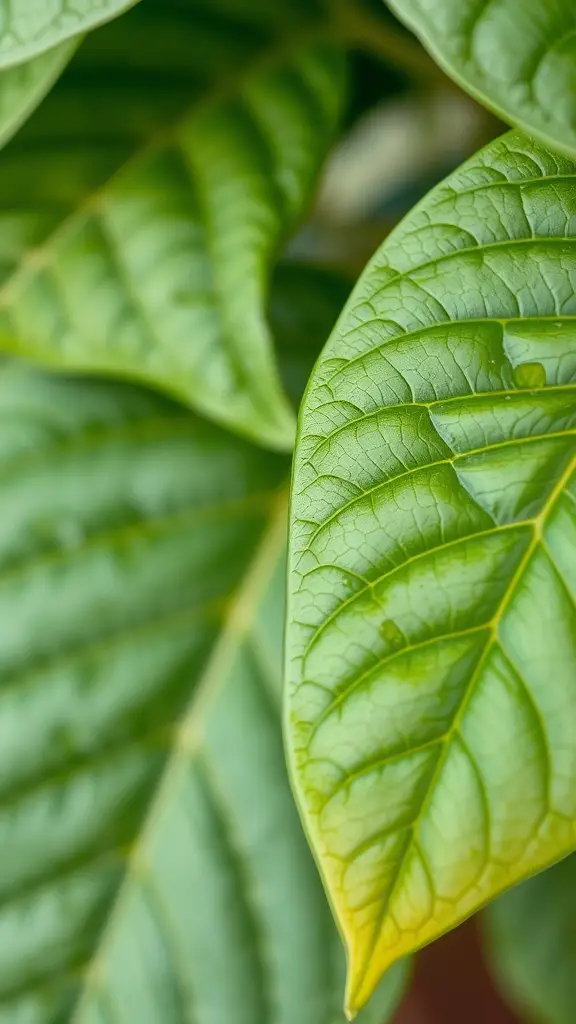
Snake Plants, or Mother-in-Law’s Tongues (Sansevieria), are celebrated for their stunning foliage. This image displays lush, green leaves with a distinctive texture, emphasizing the plant’s hardiness and versatility. Their eye-catching presence makes them a perfect centerpiece for any living space. These plants are very popular in 2025.
Looking after your Snake Plant is easy! These resilient plants are ideal for all plant lovers, from beginners to experts. Give your plant bright, indirect light for best results. Avoid direct sunlight, which can burn the leaves. Insufficient light can slow down its growth.
Proper watering is key to thriving Mother Tongue plants. Let the soil dry almost completely before watering again. Overwatering is a common problem that can cause root rot. Remember to reduce watering during the winter months when the plant’s growth slows.
Warmth is key for Mother Tongue plants, though they’re adaptable. Ideally, maintain a temperature between 60°F and 80°F. While they thrive in humid conditions, they handle drier air well. This makes them perfect for diverse indoor settings.
Decorative Potting Ideas for Mother Tongue Plants

Snake plants, or mother-in-law’s tongues, are incredibly low-maintenance and visually appealing. Let’s discover some stylish potting ideas to enhance the beauty of these fantastic plants in your 2025 home.
This image presents a diverse collection of plant pots, each with unique styles and colors. Observe the terracotta pots; they introduce a cozy, natural feel. In contrast, the streamlined, modern containers offer a current aesthetic. Combining various pot styles results in an engaging display, highlighting the individual beauty of each plant.
Elevate your space with statement pots, particularly for taller snake plants. Larger containers instantly capture attention and enhance visual appeal. Cluster smaller pots on shelves or steps to introduce depth and dimension to your 2025 decor.
Embrace texture in your plant display! Pots with geometric designs or other interesting surfaces bring an artistic touch. Combine them with sleek, smooth pots for a striking contrast. Consider using plant stands to lift some pots, showcasing your plants beautifully.
Finally, consider pot placement carefully. Position plants to ensure each receives its ideal light exposure, whether sun or shade. This promotes healthy growth and boosts your space’s visual appeal.
Best Soil Mix for Mother Tongue Plants
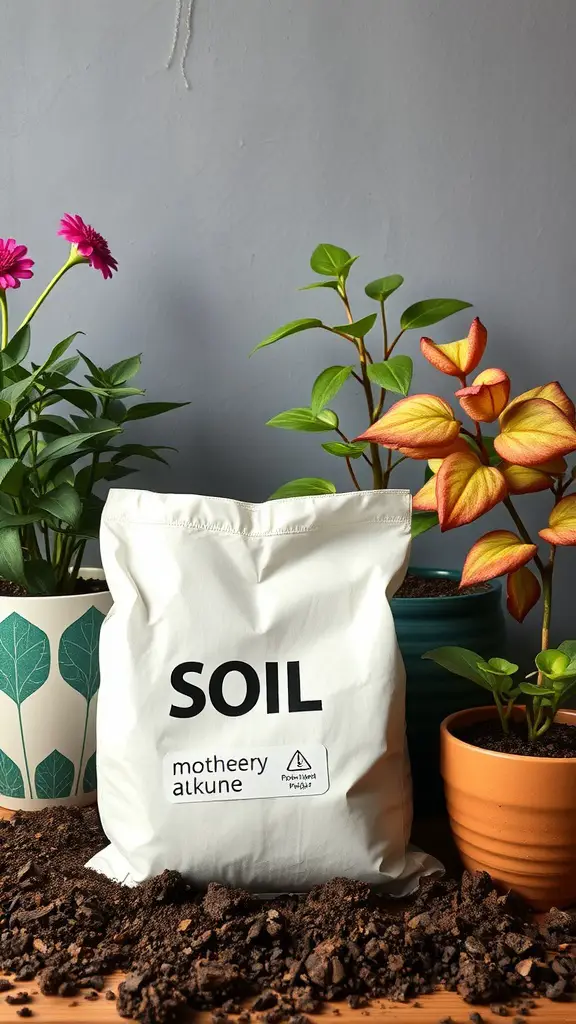
Selecting the correct soil blend is crucial for the healthy growth of Mother Tongue plants. The picture displays a bag of ‘motheery alkune’ soil, surrounded by thriving plants. This scene emphasizes how vital good soil is for supporting your beloved plants.
For optimal growth, Mother Tongue plants need well-draining soil that promotes air circulation around the roots. A superb soil mix consists of potting soil, perlite, and a touch of organic material. This combination delivers essential nutrients and safeguards against root rot.
The image showcases diverse plants in individual pots, highlighting the importance of a proper environment for Mother Tongue plants to flourish. Always select pots featuring drainage holes to prevent water accumulation.
Adding sand can boost drainage even more. Remember, quality soil is key. It provides physical support and promotes healthy, vibrant plants. Happy gardening in 2025!
Common Pests and How to Manage Them
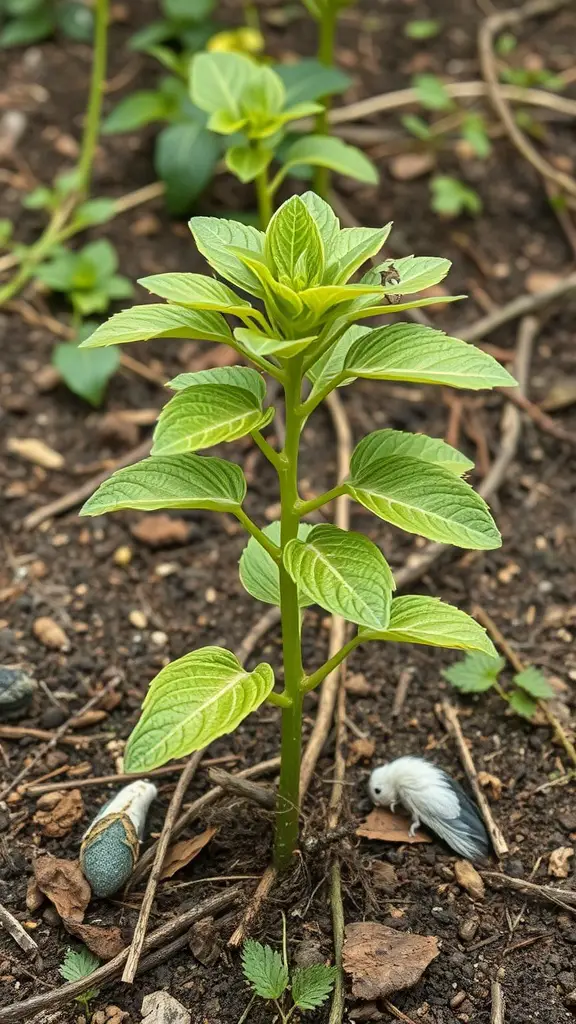
This image showcases a thriving Snake Plant, celebrated for its vibrant, green foliage. It’s crucial to monitor it for pests that can damage its beauty. Observe closely; you may spot tiny insects near the base, indicating potential problems.
Aphids and spider mites are frequent pests of Mother’s Tongue plants. These pests can lead to yellowing leaves and hinder growth. Effective pest management is essential. Regularly check your plant to detect infestations early.
A straightforward pest control method involves spraying your plants with a water and gentle soap mix. This washes away pests without plant damage. Also, introducing helpful insects like ladybugs naturally reduces pest populations.
Consistent watering practices are key to pest prevention. Excessive watering can cause root rot, weakening your plant and increasing its vulnerability to pests. Using well-draining soil helps create a healthier environment, naturally deterring unwanted infestations.
Propagation Methods for Mother Tongue Plants
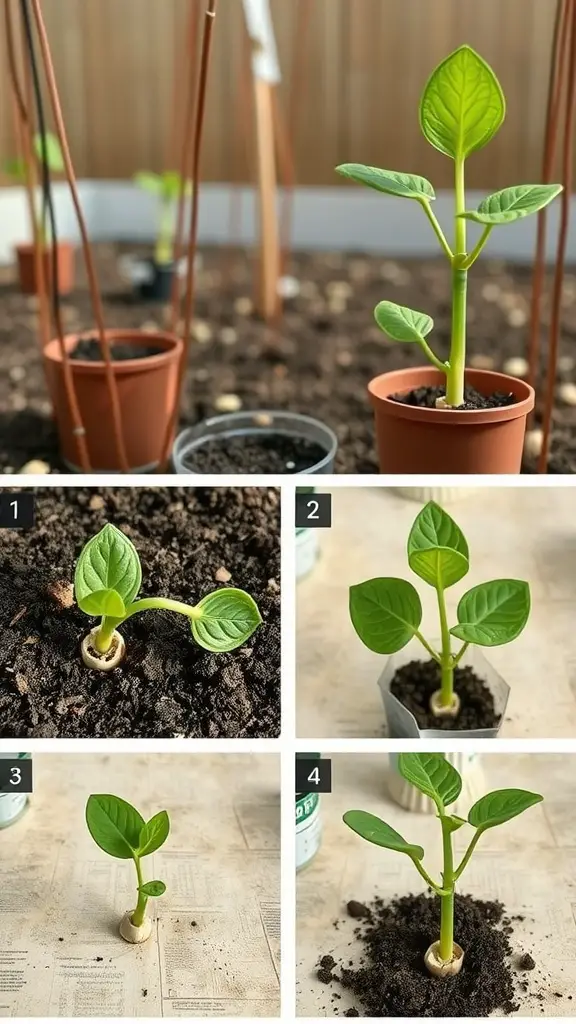
Snake plants, also called Sansevieria, are beloved for their resilience and simple upkeep. Multiplying these plants is an enjoyable and fulfilling activity, breathing fresh vitality into your indoor or outdoor spaces. The image displays a sequence of actions, illustrating various phases of propagation.
First, observe a vibrant leaf carefully removed from a fully grown plant. Using sterilized tools is crucial to avoid infections. Next, the leaf is gently placed in a rooting medium, promoting root development. Watching the tiny roots emerge is a truly rewarding experience.
Step three illustrates the rooted cutting now independently potted and upright. Adequate light and consistent watering are crucial at this stage. Step four showcases the plant’s successful growth, displaying numerous new leaves. This visual sequence provides a straightforward tutorial for propagating your own Mother-in-law’s tongue plants.
Mastering propagation unlocks a stunning array of these plants, enhancing any environment. Ready? Let’s begin the propagation process with your tools!
Using Mother Tongue Plants for Air Purification

Snake Plants, also known as Mother-in-Law’s Tongue, offer more than just aesthetic appeal to your living space. They significantly enhance indoor air quality. This image showcases their ability to absorb toxins and release fresh oxygen, resulting in a healthier environment for you.
These plants excel at removing diverse air contaminants. Their natural growth process actively purifies the air around us. Consequently, incorporating these plants, whether inside or outside, allows you to benefit from cleaner, healthier air.
Choose Mother Tongue plants renowned for their superior air-purifying abilities. They significantly enhance indoor air quality and introduce natural beauty, creating a healthier and more vibrant living space in 2025.
Mother Tongue Plants in Minimalist Design

Snake plants, or Sansevierias, are ideal for a minimalist home in 2025. Their striking, upright leaves bring a subtle touch of nature indoors. They enhance your space without being visually distracting.
This image presents a clean, minimalist corner adorned with snake plants. Light walls and warm wood accents foster a peaceful atmosphere. Carefully positioned pots highlight the plants’ natural elegance. The arrangement celebrates the power of understated design.
Minimalist design principles emphasize simplicity. By reducing ornamentation, plants naturally become the central attraction. The vibrant green foliage replaces elaborate decorations, creating a revitalizing and welcoming atmosphere.
Mix and match pot styles for visual appeal. Pairing a textured pot with a smooth one adds subtle dynamism. These low-maintenance plants are perfect for effortless greenery. They’re ideal for anyone seeking a simple way to bring nature indoors.
Creating a Mother Tongue Plant Arrangement
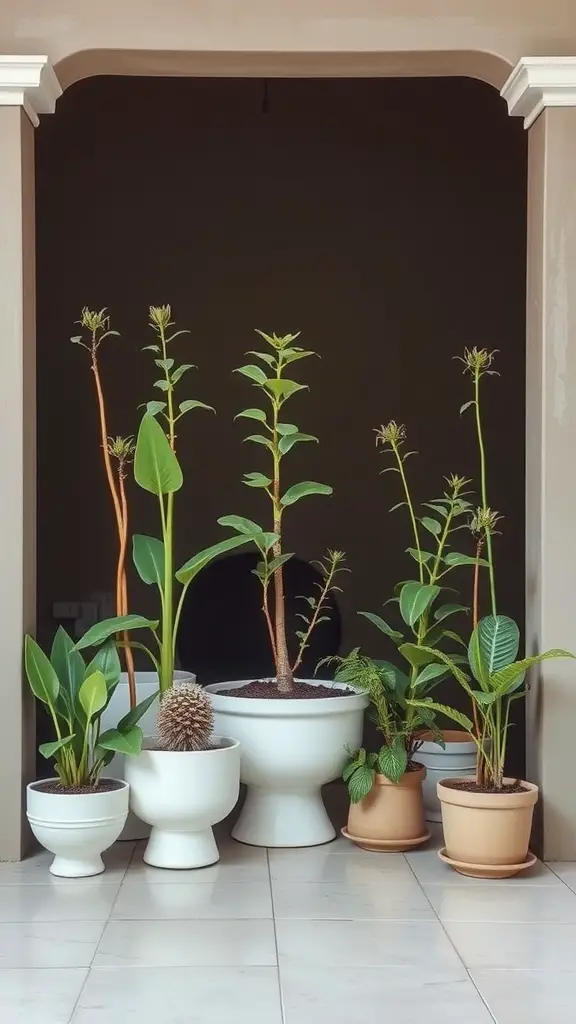
Crafting a Sansevieria arrangement is enjoyable and fulfilling. The picture presents a stunning display of these plants, each adding its distinct charm. Their varied forms and dimensions harmonize to create a welcoming ambiance.
Begin by picking pots that work well together. Feel free to combine different colors and styles for a unique vibe. Alternatively, use similar designs for a unified appearance. The white and terracotta pots shown create a nice balance, highlighting the vibrant green plants.
When arranging your plants, think about their heights. Position taller plants in the back and shorter ones up front. This creates a visually appealing layered effect. Plus, it simplifies plant care by ensuring each plant is easily reachable.
Remember to think about your room’s lighting. Certain plants need lots of sunlight. Others do better in dimmer areas. Place your plants where they’ll grow best.
To finish, add decorative stones or moss atop the soil for a refined appearance. This simple touch elevates your plant display, creating a beautiful centerpiece for your home in 2025.
Mother Tongue Plants as Feng Shui Elements
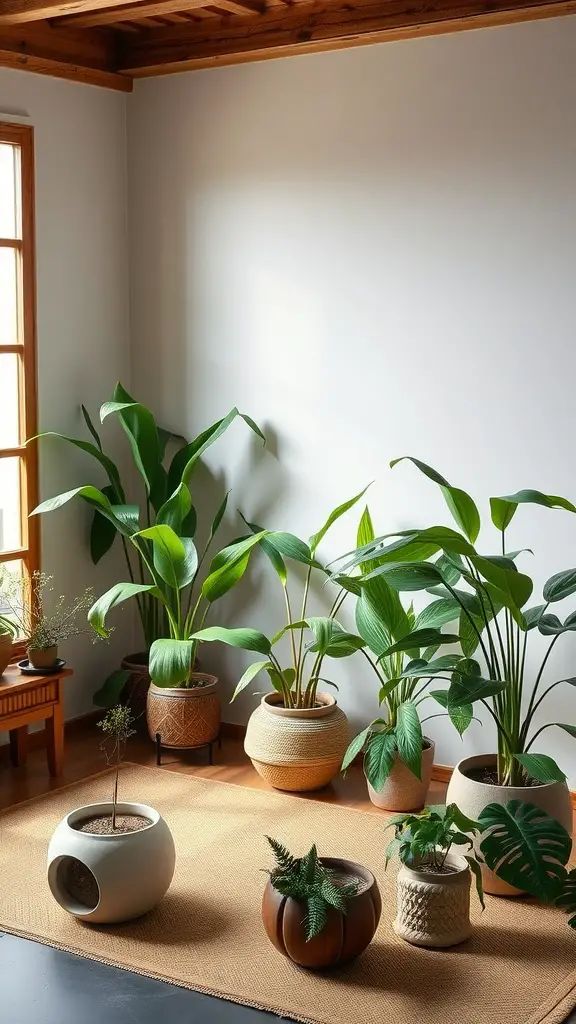
Adding Snake Plants (Mother-in-Law’s Tongue) to your home boosts positive energy flow, or “chi.” These visually striking plants are key Feng Shui elements. Strategic placement invites good vibes into your living space, according to 2025 Feng Shui practices.
This image showcases a tranquil space filled with vibrant Snake Plants (Mother-in-Law’s Tongue) in assorted pots. The arrangement fosters a peaceful ambiance. Sunlight streams through the window, complementing the wooden ceiling’s warm hues and enhancing the calming effect. Each plant contributes to a balanced and harmonious environment, key elements in Feng Shui design principles, updated for 2025 trends.
Think carefully about where you put these plants. Placing them in areas needing more life can encourage growth and energy. Your pot choices are also important. Natural materials, such as clay or woven baskets, can improve the natural feel. This grounds your space and creates a peaceful atmosphere.
Furthermore, the diverse plant selection in the picture represents resilience and variety. This combination results in a lively and tranquil atmosphere. As you arrange your Snake Plants, consider the atmosphere you wish to foster—whether it’s innovation, tranquility, or prosperity. The goal is to design a space that resonates with your personal preferences.
Indoor vs. Outdoor Planting Options
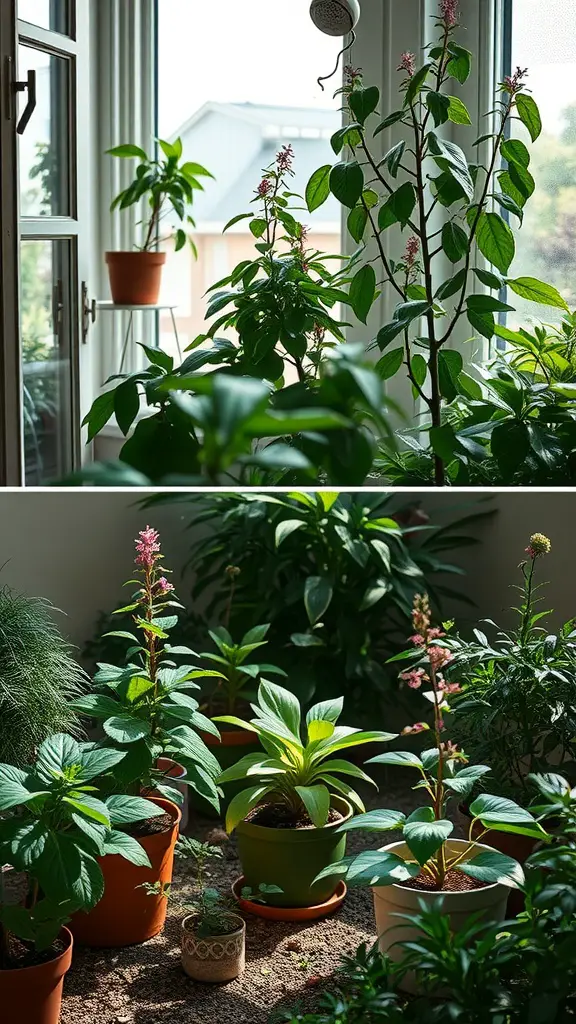
Snake plants, often called mother-in-law’s tongue, are incredibly adaptable. These photos demonstrate their ability to flourish both inside and outside your home.
The initial photo showcases two snake plants enjoying sunlight by a window. This demonstrates their ability to flourish indoors with natural light. Positioned near a window, they can achieve significant growth and vitality, enhancing the ambiance of any room.
Alternatively, the second image showcases a charming nook brimming with potted snake plants, injecting vibrant energy into the room. This indoor setup lets you grow your plants year-round, regardless of the weather. It’s ideal for anyone seeking to add a touch of nature to their interior spaces.
Growing snake plants outdoors has advantages. Abundant sunlight and fresh air promote vibrant growth. Outdoor plants often become larger and stronger. Use well-draining soil to avoid waterlogged roots.
Deciding whether to grow snake plants indoors or outdoors hinges on your available space and daily routine. Both methods let you appreciate the elegance of these resilient plants. Think about your desired location and the level of care you can provide. Whether you opt for indoor containers or a bright outdoor setting, snake plants will elevate your surroundings.
Creative Displays for Small Spaces

Maximize limited spaces with creative displays of snake plants. This image showcases a smart vertical arrangement, perfect for adding greenery to any entryway. Stylish pots hold various plants on each shelf, creating a functional and attractive design.
Using labeled pots brings a personal feel to your indoor garden. It makes identifying each plant simple. This is ideal for plant enthusiasts who love organizing their collections. Feel free to mix and match pot colors and styles. Create a unique look that showcases your individual style. This trend is especially popular in 2025!
Vertical gardens are more than just space savers. They transform dull walls into vibrant, living art. Tailor your vertical garden to your personal taste. Use shelves, hanging baskets, or pegboards for a unique and eye-catching display.
Elevate your plant display by incorporating charming accents. Think miniature sculptures or delicate fairy lights for a warm, inviting ambiance. The goal is to maximize your indoor plant haven with flourishing greenery.
Combining Mother Tongue Plants with Other Species
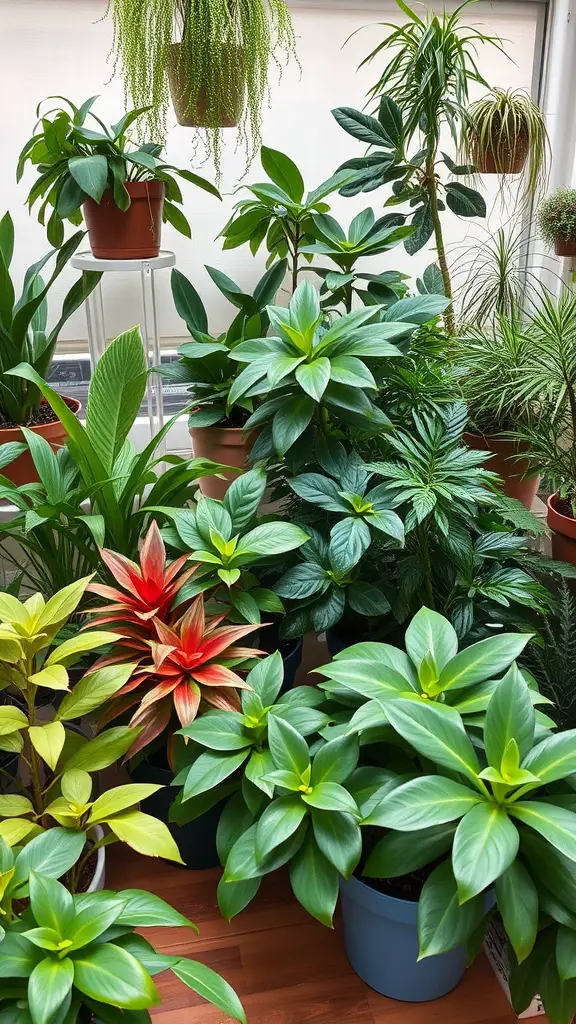
This captivating photo showcases a thriving assortment of Mother Tongue plants, beautifully interwoven with other verdant foliage. The diverse shades of green, punctuated by vibrant touches of red and yellow, cultivate an energetic ambiance perfect for enlivening any room in 2025.
When you mix Mother-in-Law’s Tongue (Sansevieria) with other plants, choose those needing similar light and water. Good partners include peace lilies or pothos. This creates a balanced and attractive display. The deep green of Sansevieria provides a striking contrast to the lighter colors of its companions.
Consider incorporating hanging plants. String of pearls or spider plants work beautifully. They introduce dimension and movement to your display. This layered approach is visually attractive. It also optimizes space, particularly in compact settings.
Remember the pots! Diverse shapes and textures elevate your plant display. Imagine a modern ceramic pot showcasing a Mother Tongue plant. Next to it, a rustic terracotta pot houses another species. This contrast creates captivating visual appeal.
Varying plant heights is key for visual appeal. Use taller plants as a background. This makes the shorter Mother Tongue plants more noticeable. The result is a captivating and dynamic arrangement.
Seasonal Care Tips for Mother Tongue Plants

Snake plants, often called Mother Tongue plants, are adaptable and widely loved for indoor spaces. To ensure they flourish year-round, consider these seasonal care tips.
During spring and summer, these plants thrive in bright, indirect light. Seeing new growth indicates a healthy plant. Water when the top inch of soil is dry to the touch. Snake plants prefer drier conditions, so avoid overwatering.
When autumn and winter bring cooler temperatures, decrease your watering frequency. These plants go into a period of rest and require less hydration. Position them in a warm location, shielded from chilly air currents. This seasonal care will ensure their well-being during the colder periods.
Maintaining your Snake Plant is easy! Follow these updated seasonal care tips for a flourishing plant year-round. Remember to gently wipe the leaves now and then. This helps maximize light absorption for optimal growth!
Mother Tongue Plants in Different Cultures

In 2025, plants continue to be culturally significant worldwide, symbolizing much more than simple foliage. This unique map showcases Mother Tongue plants, emphasizing their importance in diverse geographical areas.
Every plant is displayed in a distinctive pot. This represents the many ways individuals interact with nature. Some cultures believe certain plants bring fortune or well-being. This highlights the strong traditions linked to these plants. The map’s bright colors also illustrate the world’s abundant biodiversity.
In 2025, communities worldwide are embracing plants, honoring their traditions and nurturing environmental consciousness. This map is more than just beautiful; it highlights the crucial role of these botanical resources in our diverse cultures.
Challenges in Growing Mother Tongue Plants
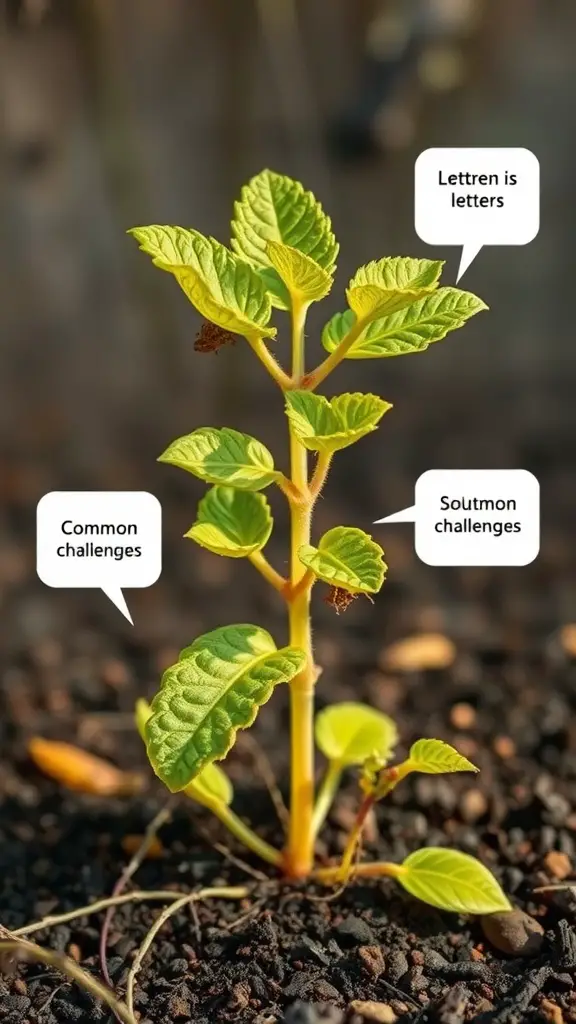
Cultivating Snake Plants (Mother-in-Law’s Tongue) offers a rewarding experience, yet it presents certain obstacles. The picture displays a thriving young plant with bright foliage, highlighting the need for careful attention. Whether you’re new to gardening or have some experience, knowing these potential issues will boost your success.
A frequent issue is providing the correct water level. Snake Plants flourish in soil with good drainage, yet require steady hydration. Too much water can result in root decay, while insufficient water leads to drooping leaves. Achieving the perfect balance is key!
Effective pest management is crucial. The image highlights how certain plants can attract unwanted pests. Watch for early warning signs, such as leaf discoloration or holes, to address problems quickly. Consistent plant inspections and the use of eco-friendly solutions are highly recommended for maintaining a healthy garden in 2025.
Finally, lighting is key. Snake Plants thrive in indirect light. Excessive direct sun can burn their leaves. Insufficient light can hinder growth. Place your plant where it receives filtered light for optimal health.
DIY Mother Tongue Plant Fertilizer
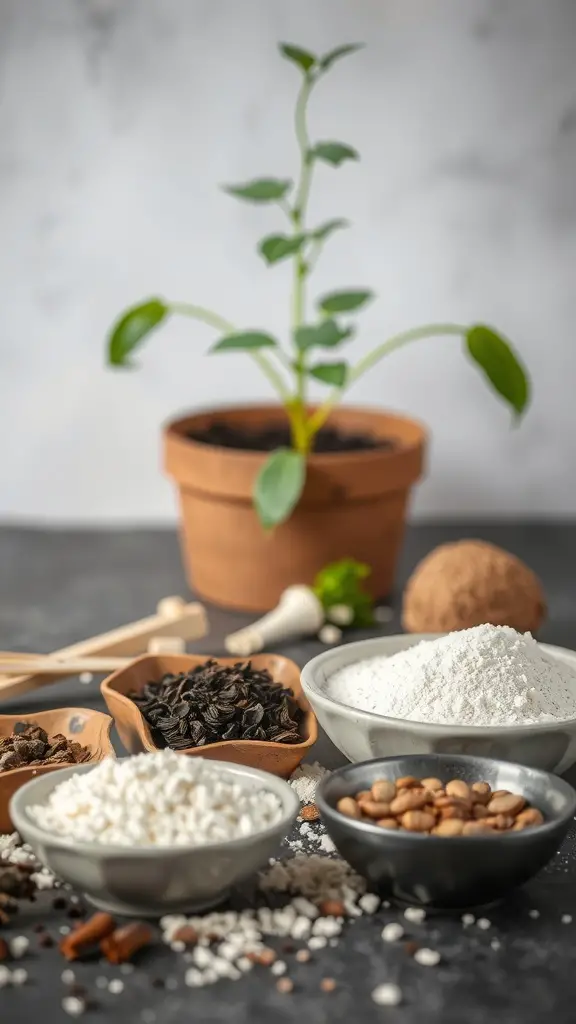
Want to pamper your Mother Tongue plant? Crafting homemade fertilizer is a delightful and beneficial activity. The picture displays all the necessary components for a nutrient-rich mix. It’s simple to prepare and a fantastic method to repurpose common household items.
This image showcases a vibrant Mother Tongue plant, flourishing in a classic terracotta pot. Around it, you’ll find the components for a fantastic homemade fertilizer. These include ground nuts, beneficial powders, and aromatic spices, each contributing unique nutrients to boost plant growth.
Crafting this homemade fertilizer is simple. Collect items such as crushed eggshells, used coffee grounds, and dried leaves. Begin by pulverizing the eggshells into a fine powder. This delivers vital calcium, crucial for robust plant cell development. Then, incorporate coffee grounds to introduce nitrogen, encouraging vibrant leaf growth.
Thoroughly combine all ingredients in a bowl. For a smoother consistency, add a small amount of water to form a paste. Evenly distribute the fertilizer around the base of your Mother Tongue plant. Gently mix it into the topsoil. Water the plant well afterwards to ensure nutrient absorption by the roots.
Boost your plant’s growth with DIY fertilizer for a flourishing garden. It’s also an eco-friendly approach to plant care!
Best Tools for Mother Tongue Plant Care
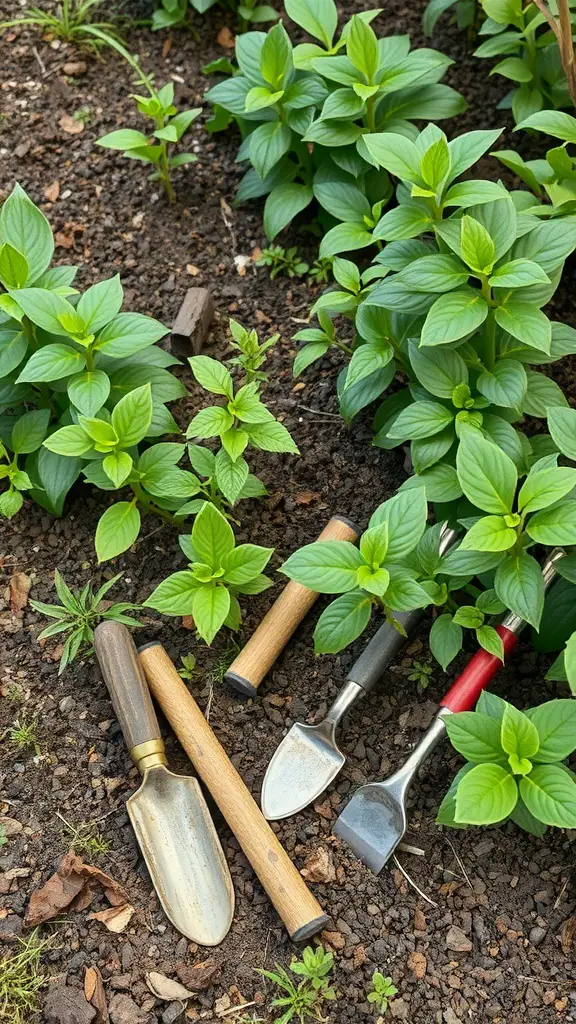
Cultivating your Snake Plant collection is rewarding, particularly with the correct gardening implements. The photo showcases a flourishing group of Snake Plants accompanied by key tools. Their robust, verdant foliage emerging from the earth highlights the satisfaction of tending to your indoor garden.
These essential gardening tools, such as trowels and weeding forks, are ideal for digging, planting, and plant care. A robust hand trowel excels at scooping soil and transplanting seedlings. A weeder efficiently removes unwanted weeds, preventing them from stealing vital nutrients from your prized plants.
A quality watering can is essential for nurturing Mother Tongue plants. Consistent soil moisture promotes healthy growth. Protect your hands during planting and trimming with durable gardening gloves.
Using a compact rake is beneficial. It aerates the soil and blends in compost, boosting plant health. Plant care is ongoing. The correct tools simplify and enhance the experience.
Unique Varieties of Mother Tongue Plants
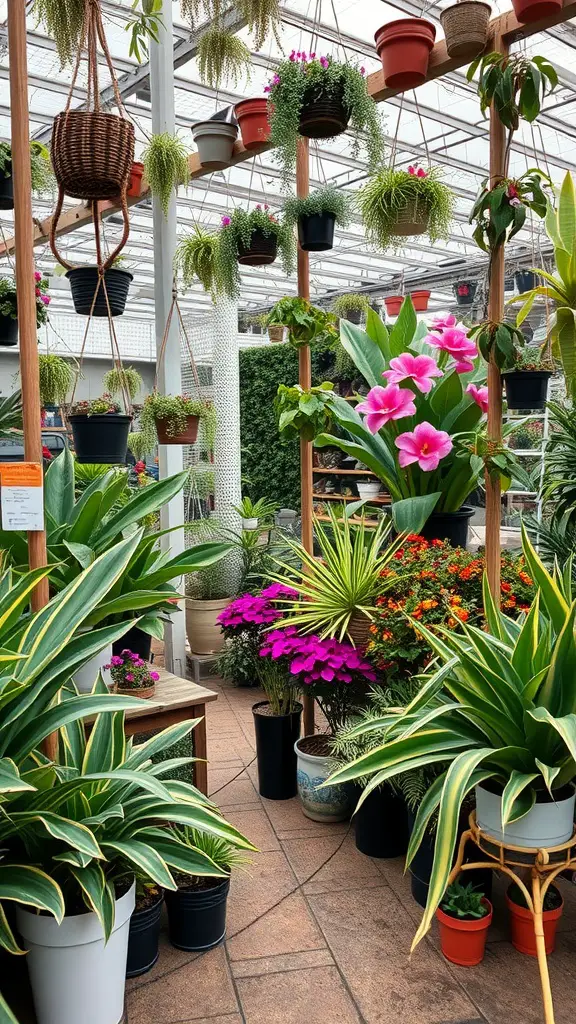
This stunning image features a diverse array of Mother Tongue plants, also called Sansevierias. These plants are prized for their eye-catching leaves and resilience. The photo presents different Sansevieria types in pots, emphasizing their distinct forms and hues. They are a popular choice for modern homes in 2025.
Lush greenery surrounds you, with Mother Tongue plants displaying their striking, striped leaves. These easy-care plants are a popular choice for plant enthusiasts. Vibrant flowers bloom nearby, adding a cheerful splash of color to the greenhouse in 2025.
Snake Plants, also known as Mother-in-Law’s Tongue, are incredibly adaptable. They flourish indoors and outdoors. Their low-maintenance nature makes them ideal for novice plant owners. Looking to brighten your home or garden? These plants are an excellent choice for adding beauty and greenery.
Mother Tongue Plants for Office Spaces

Transform your workspace into an inviting haven with the simple addition of plants. The image showcases several Snake Plants (Mother-in-Law’s Tongue) strategically placed within a well-lit and tidy office. These plants enhance the aesthetic appeal and contribute to improved morale and increased efficiency.
Observe the pothos’ bright foliage and the snake plant’s unique designs. These plants are favored for their easy care and adaptability to different lighting. Adding them to desks or shelves instantly enhances any office space.
Furthermore, incorporating plants into your office enhances air purity. They act as natural air purifiers, removing harmful substances and fostering a healthier environment. This straightforward addition can significantly improve your daily work experience.
Opt for timeless terracotta pots or sleek, modern planters that complement your office’s style. Combine various plants to enhance visual appeal and create a balanced atmosphere. From petite succulents to lush, leafy greens, each plant elevates the vibrancy of your workspace.
The Benefits of Keeping Mother Tongue Plants

Snake plants, also called Mother Tongue plants, are more than just attractive houseplants. They offer numerous advantages, making them a favorite among plant enthusiasts. The picture displays a comfortable setting enhanced by these lively green plants, highlighting their adaptability and appeal.
Mother Tongue plants offer a key advantage: they purify the air. These plants effectively remove toxins, creating a healthier living space. Envision breathing fresher air while appreciating their beauty!
These plants are incredibly easy to care for, ideal for today’s fast-paced lives. They adapt well to different light levels and need very little water. Whether you’re an experienced gardener or just starting out, Mother Tongue plants effortlessly integrate into your life.
Another key benefit is their adaptability to various indoor environments. They are resilient, even with minimal care, maintaining their beauty. This is particularly helpful in homes with changing temperatures. The image showcases their thriving growth in well-lit areas, maximizing natural sunlight.
Finally, these plants are celebrated for their soothing qualities. Introducing greenery into your home can lower stress levels and improve your overall well-being. Their tranquil atmosphere explains why they are so appealing.
Mother Tongue Plants for Beginners

Embarking on your Mother Tongue plant adventure is incredibly fulfilling. These visually appealing plants are also remarkably easy to maintain, making them ideal for novice plant enthusiasts.
The image presents a vibrant display of flowers next to a book, “A Beginner’s Guide Letters & Words.” This book likely provides easy-to-follow instructions, perhaps on caring for these plants. The flowers boast a range of colors, highlighting the rich variety found in Mother Tongue plants.
Starting with easy-to-grow indoor plants is a smart move. Snake Plants and Pothos are excellent choices because they’re tough and need little attention. Don’t worry if you miss a watering day; they can handle it!
This book represents a chance to learn and grow. Remember to understand each plant’s specific needs. Consider factors like light, water, and soil. Use guides to prevent common errors and ensure success.
Embrace experimentation! Every plant is unique. Watching them thrive will brighten your home. Happy gardening in 2025!
Historical Significance of Mother Tongue Plants

Native plants boast a deep history, mirroring cultural heritage and customs. This image highlights diverse plants significant through time, showing their connection to human lives.
Observe the timeline showcasing the plant’s journey from 1996 to 2019. Each year signifies a fresh development in our connection with these natural treasures. The bright yellow flower and verdant leaves, for instance, symbolize both aesthetic appeal and the plants’ therapeutic and practical uses in everyday living.
Every plant in this image has a unique history. Some were vital for ancient rituals. Others provided sustenance or healing. This collection showcases the many ways these plants were valued throughout history.
In 2025, we understand that native plants are far more than just vegetation. They represent our heritage and cultural identity, connecting families and communities to the land. Recognizing the vital roles these plants play allows us to truly value their significance across diverse cultures.
Fun Facts About Mother Tongue Plants

This image showcases the captivating beauty of Mother Tongue plants. Their vibrant colors and lush foliage effortlessly enhance any indoor or outdoor setting. They’re a simple way to add charm and brightness to your living space or garden in 2025.
Mother Tongue plants, famous for purifying air, significantly boost indoor air quality. They’re both beautiful and practical! Adaptable to different light levels, they’re ideal for all gardeners, from novices to experts.
Here’s a cool fact: these plants are easy to care for. They don’t need much attention, perfect for busy people. Just some water and the right sunlight will keep them thriving.
Furthermore, certain Mother Tongue plant types boast distinctive patterns and textures. This introduces an artistic element to any plant display. You can find a Mother Tongue plant to match your taste, whether you favor bright flowers or understated foliage.
Mother Tongue Plants and Their Folklore

Native plants are deeply intertwined with cultural narratives and time-honored traditions. These beloved garden inhabitants possess both beauty and profound symbolic value. This image displays a book page exploring the poetic links to these plants, revealing the frequent intersection of folklore and the natural world.
This writing, while lighthearted, reveals the deep history and meticulous care behind these plants. Discovering their community roles, you’ll see they represent love, legacy, and wellness. Many feel that growing these plants strengthens ties to their family history, echoing tales shared across generations.
Across diverse cultures, nurturing these native plants reflects a deep respect for heritage. Mother tongue plants, used in age-old treatments and carrying symbolic weight, highlight the need to protect our natural legacy. Discover how these plants can enhance our homes and well-being. Whether you’re an experienced gardener or a beginner, learning their stories enriches your gardening experience.

